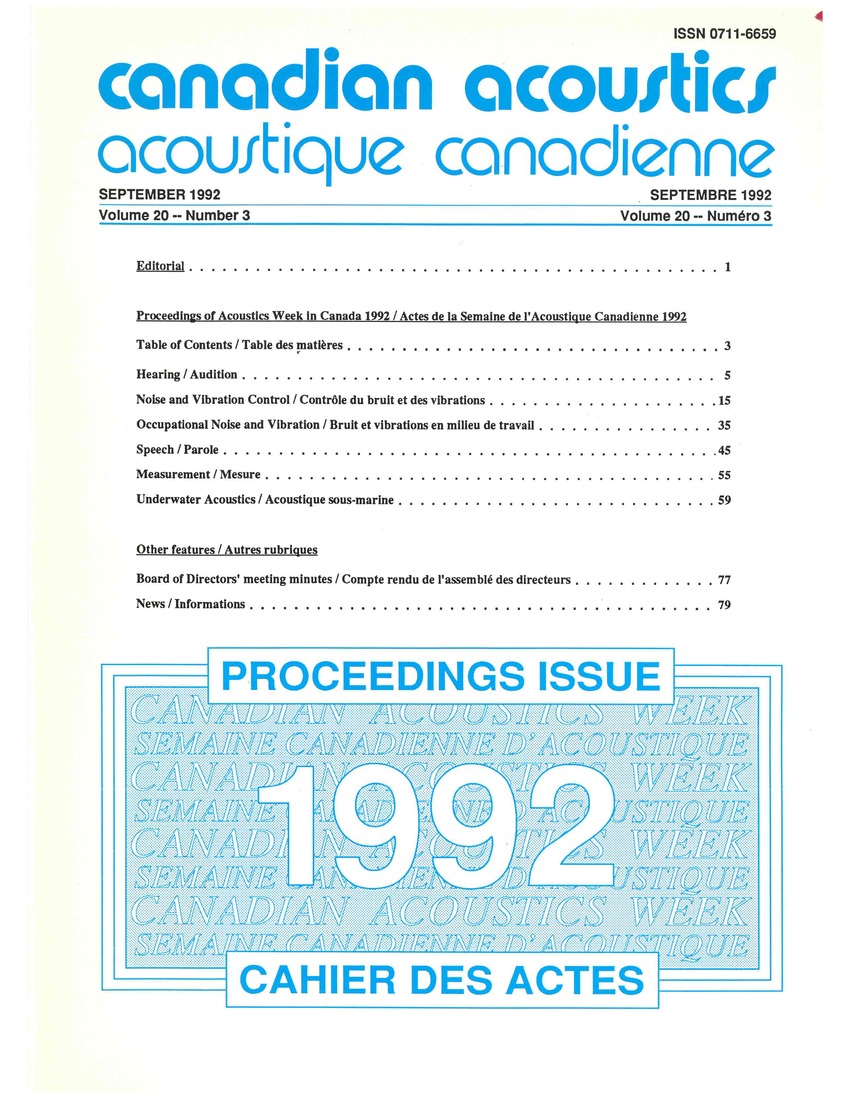Digital generation of the high quality audio signals with the NeXT computer
Keywords:
acoustic signal processing, acoustic wave production, physics computing, NeXT computer, computer-based digital function generator, intermodulation distortion, quartz clock, D/A converter, digital synthesis, Fourier theorem, real-time synthesis, sine function look-up table, interpolation processAbstract
A computer-based digital function generator can generate any arbitrary type of signal in the frequency range from 0 Hz to 20000 Hz, S/N=95 dB, and with no harmonic or intermodulation distortion (when based on 16-bit, 44.1 kHz-sampling rate D/A converter). Frequency stability is determined by a quartz clock in the D/A converter which has an accuracy in the order of 1/107. Generation of sinusoidal waves is of primary importance in digital synthesis since due to the Fourier theorem any periodic wave may be constructed via additive synthesis (an addition of pure tones with appropriate amplitudes and phases). There are many alternative methods to digitally generate pure tones. Very often real-time synthesis is accomplished by using a sine function look-up table. A limitation to this approach is the short length of the sine table. In order to synthesize any arbitrary frequency using the look-up table method, one has to synthesize the values of the sine function using an interpolation process. Interpolation between sine samples leads to the generation of harmonic and intermodulation distortion by this algorithm. Another problem is that synthesis of more complex signal (combinations of several sinusoids with certain amplitudes and phases) in real time could put too much performance demand on the computer's DSP chip or microprocessorAdditional Files
Published
How to Cite
Issue
Section
License
Author Licensing Addendum
This Licensing Addendum ("Addendum") is entered into between the undersigned Author(s) and Canadian Acoustics journal published by the Canadian Acoustical Association (hereinafter referred to as the "Publisher"). The Author(s) and the Publisher agree as follows:
-
Retained Rights: The Author(s) retain(s) the following rights:
- The right to reproduce, distribute, and publicly display the Work on the Author's personal website or the website of the Author's institution.
- The right to use the Work in the Author's teaching activities and presentations.
- The right to include the Work in a compilation for the Author's personal use, not for sale.
-
Grant of License: The Author(s) grant(s) to the Publisher a worldwide exclusive license to publish, reproduce, distribute, and display the Work in Canadian Acoustics and any other formats and media deemed appropriate by the Publisher.
-
Attribution: The Publisher agrees to include proper attribution to the Author(s) in all publications and reproductions of the Work.
-
No Conflict: This Addendum is intended to be in harmony with, and not in conflict with, the terms and conditions of the original agreement entered into between the Author(s) and the Publisher.
-
Copyright Clause: Copyright on articles is held by the Author(s). The corresponding Author has the right to grant on behalf of all Authors and does grant on behalf of all Authors, a worldwide exclusive license to the Publisher and its licensees in perpetuity, in all forms, formats, and media (whether known now or created in the future), including but not limited to the rights to publish, reproduce, distribute, display, store, translate, create adaptations, reprints, include within collections, and create summaries, extracts, and/or abstracts of the Contribution.


